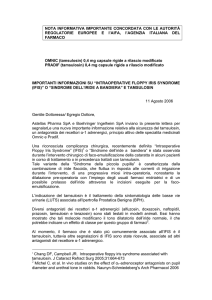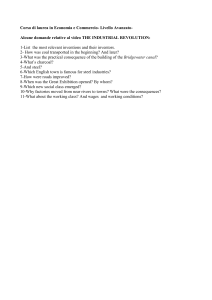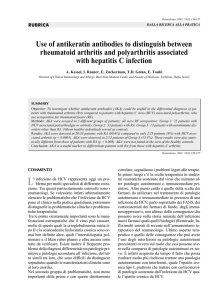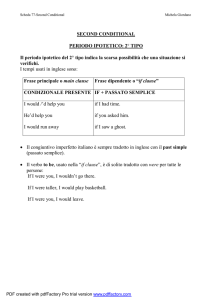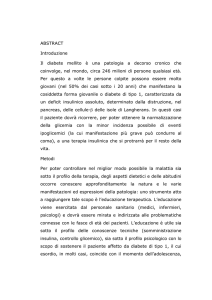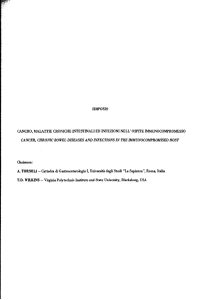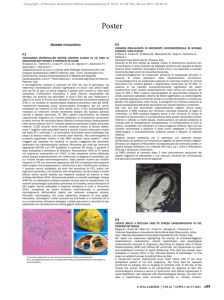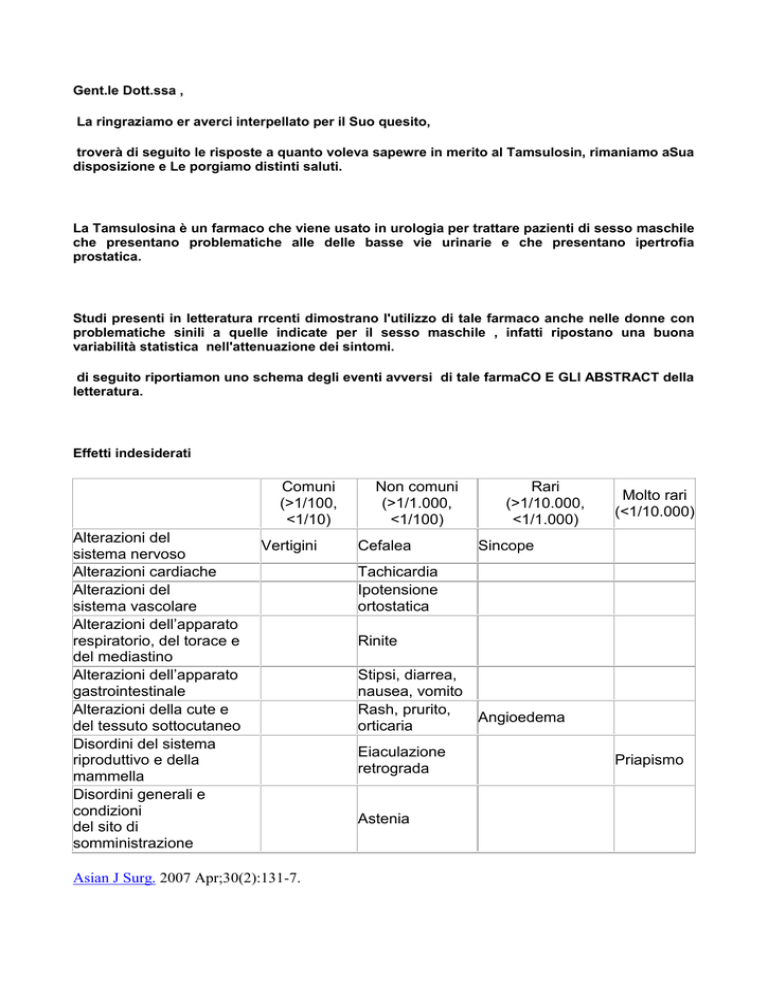
Gent.le Dott.ssa ,
La ringraziamo er averci interpellato per il Suo quesito,
troverà di seguito le risposte a quanto voleva sapewre in merito al Tamsulosin, rimaniamo aSua
disposizione e Le porgiamo distinti saluti.
La Tamsulosina è un farmaco che viene usato in urologia per trattare pazienti di sesso maschile
che presentano problematiche alle delle basse vie urinarie e che presentano ipertrofia
prostatica.
Studi presenti in letteratura rrcenti dimostrano l'utilizzo di tale farmaco anche nelle donne con
problematiche sinili a quelle indicate per il sesso maschile , infatti ripostano una buona
variabilità statistica nell'attenuazione dei sintomi.
di seguito riportiamon uno schema degli eventi avversi di tale farmaCO E GLI ABSTRACT della
letteratura.
Effetti indesiderati
Comuni
(>1/100,
<1/10)
Alterazioni del
sistema nervoso
Alterazioni cardiache
Alterazioni del
sistema vascolare
Alterazioni dell’apparato
respiratorio, del torace e
del mediastino
Alterazioni dell’apparato
gastrointestinale
Alterazioni della cute e
del tessuto sottocutaneo
Disordini del sistema
riproduttivo e della
mammella
Disordini generali e
condizioni
del sito di
somministrazione
Vertigini
Asian J Surg. 2007 Apr;30(2):131-7.
Non comuni
(>1/1.000,
<1/100)
Cefalea
Rari
(>1/10.000,
<1/1.000)
Molto rari
(<1/10.000)
Sincope
Tachicardia
Ipotensione
ortostatica
Rinite
Stipsi, diarrea,
nausea, vomito
Rash, prurito,
Angioedema
orticaria
Eiaculazione
retrograda
Astenia
Priapismo
Efficacy of tamsulosin in the treatment of
lower urinary tract symptoms (LUTS) in
women.
Pummangura N, Kochakarn W.
Division of Urology, Department of Surgery, Faculty of Medicine, Ramathibodi Hospital, Mahidol
University, Bangkok, Thailand.
Abstract
OBJECTIVE: We attempted to determine whether tamsulosin is an efficacious therapy for the
treatment of lower urinary tract symptoms (LUTS) in women.
METHODS: A total of 140 women, aged 27-69 years old with LUTS entered a randomized doubleblind study comparing tamsulosin (70) versus placebo (70) for 1 month. The outcome variables
were mean change from baseline of International Prostate Symptom Score (IPSS), mean change
from baseline of mean and maximum urinary flow rate and any adverse effects.
RESULTS: Mean change from baseline of IPSS (standard deviation, SD) were -5.6 (6.3) in the
tamsulosin group and -2.6 (6.1) in the placebo group. The difference was statistically significant (p
= 0.008). Mean change from baseline of mean urinary flow rate (SD) was 0.7 (2.7) mL/second in
the tamsulosin group and -0.5 (2.6) mL/second in the placebo group. The difference was also
statistically significant (p = 0.013). However, the difference in mean change from baseline of
maximum urinary flow rate between the two groups was not statistically significant (p = 0.506).
There were two patients in the tamsulosin group who experienced dizziness and asthenia. No other
adverse effect was detected.
CONCLUSION: Tamsulosin is more efficacious than placebo in the treatment of LUTS in women.
PMID: 17475584 [PubMed - indexed for MEDLINE]
Use of alpha1-blockers in female functional
bladder neck obstruction.
Pischedda A, Pirozzi Farina F, Madonia M, Cimino S, Morgia G.
Department of Urology, University of Sassari, Sassari, Italy.
Abstract
INTRODUCTION: Bladder outflow obstruction may cause obstructive or irritative symptoms. The
diagnosis of female functional bladder neck obstruction requires a pressure/flow study and
electromyography performed by videourodynamics. The treatment includes self-catheterization or
bladder neck incision. We administered tamsulosin, an alpha1A/alpha1D-selective adrenergic
antagonist, in women with functional bladder neck obstruction to evaluate its potential therapeutic
effects.
PATIENTS AND METHODS: A group of 18 women affected by functional bladder neck
obstruction was selected. The diagnosis was made by means of a pressure/flow study combined
with electromyography and a fluoroscopic test. The diagnostic criteria were: high detrusor pressure
with reduced maximum flow, silent electromyography activity, and bladder neck nonfunnelling
during the fluoroscopic test. Tamsulosin 0.4 mg once daily was administered for at least 30 days.
Patients with a postvoid residual urine volume > or = 100 ml performed intermittent selfcatheterization. Patients with a postvoid residual urine volume < 100 ml performed selfcatheterization every 7 days. After 30 days of therapy, all patients underwent a new pressure/flow
study and a micturition fluoroscopic test.
RESULTS: 10 (56%) out of 18 treated patients showed a statistically significant improvement in
symptoms, maximum flow, and postvoid residual urine volume (p < 0.01).
CONCLUSION: The use of alpha1-blockers may be an initial treatment option for female
functional bladder neck obstruction, as this therapeutic option proved to be effective in more than
50% of our patients suffering from this voiding dysfunction.
Copyright 2005 S. Karger AG, Basel.
PMID: 15812214 [PubMed - indexed for MEDLINE]
J Korean Med Sci. 2010 Jan;25(1):117-22. Epub 2009 Dec 26.
Efficacy and safety of tamsulosin for the
treatment of non-neurogenic voiding
dysfunction in females: a 8-week prospective
study.
Lee KS, Han DH, Lee YS, Choo MS, Yoo TK, Park HJ, Yoon H, Jeong H, Lee SJ, Kim H, Park
WH.
Department of Urology, Samsung Medical Center, Sungkyunkwan University School of Medicine,
Seoul, Korea.
Abstract
We evaluated the therapeutic effects of tamsulosin for women with non-neurogenic voiding
dysfunction. Women who had voiding dysfunctions for at least 3 months were included. Inclusion
criteria were age > or =18 yr, International Prostate Symptom Score (IPSS) of > or =15, and
maximum flow rate (Q(max)) of > or =12 mL/sec and/or postvoid residuals (PVR) of > or =150
mL. Patients with neurogenic voiding dysfunction or anatomical bladder outlet obstruction were
excluded. All patients were classified according to the Blaivas-Groutz nomogram as having no or
mild obstruction (group A) or moderate or severe obstruction (group B). After 8 weeks of treatment,
treatment outcomes and adverse effects were evaluated. One hundred and six patients were
evaluable (70 in group A, 36 in group B). After treatments, mean IPSS, bother scores, Q(max),
PVR, diurnal and nocturnal micturition frequencies and scored form of the Bristol Female Lower
Urinary Tract Symptoms questionnaire (BFLUTS-SF) were changed significantly. Eighty-nine
patients (84%) reported that the treatment was beneficial. The proportion of patients reported that
their bladder symptoms caused "moderate to many severe problems" were significantly decreased.
No significant difference were observed between the groups in terms of IPSS, bother score,
Q(max), PVR, micturition frequency, and BFLUTS-SF changes. Adverse effects related to
medication were dizziness (n=3), de novo stress urinary incontinence (SUI) (n=3), aggravation of
underlying SUI (n=1), fatigue (n=1). Tamsulosin was found to be effective in female patients with
voiding dysfunction regardless of obstruction grade.
PMID: 20052356 [PubMed - indexed for MEDLINE]PMCID: PMC2800025Free PMC Article

